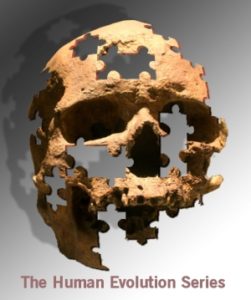
Scientists at a cave site in South Africa are kicking into high gear as they continue to uncover more fossil bones of what is suspected to be an early human ancestral (“hominid”) species.
The location is known as the “Rising Star” Cave site in South Africa’s Cradle of Humankind World Heritage Site, about 40 kilometers north of Johannesburg, and although it is far too soon to determine the classification and age of the fossil finds, the site could turn out to yield the richest collection of hominid fossil finds at any one site in South Africa, a country that has made history in the chronicles of human evolution research. More than 300 fossil fragments of multiple individuals have been recovered, with potentially much more to come. In the world of early human fossil hunting, this is a rare occurrence.
“Even [for] the best known species of early hominid, there are pieces missing,” said University of the Witwatersrand paleoanthropologist Lee Berger in a blog report from National Geographic reporter Andrew Howley. “What is exceptional about these fossils is we already have parts of the anatomy that have almost never been seen before in any species, and certainly not in this kind of abundance.”*
And now, one of the most critical tasks of the expedition begins to unfold — the assembly and examination of key fragments of the expedition’s first-recovered fossil cranium, an exercise that will lend some of the first important clues to the identity of the early human who inhabited the area of the cave eons ago. Back in the tent lab near the site, Darryl de Ruiter of Texas A & M University and the Evolutionary Studies Institute will do the honors. According to de Ruiter, it is arguably the cranium that retains the most overall consistency among early human species, as other parts, such as the mandible (jaw bone), may vary considerably in size and shape, even within a species.
The fragile cranium fragments had to be slowly and carefully excavated and then removed from their cave context before much further work could be done to excavate what could lie beneath. Now that they have been removed, excavations will progress full-speed ahead to recover what could be many more finds.
The trove of bones were first discovered in October by a pair of recreational cavers, who alerted Lee Berger, a well-known paleoanthropologist with the University of Witwatersrand, who has been at the forefront of major hominid fossil discoveries in South Africa, such as the recent Australopithecus sediba finds at the Malapa cave site. To investigate the cave and its contents, Berger spearheaded the assembly of an expeditionary group (called the “Rising Star Expedition”) of scientists. Along with chief scientists, the group included six researchers who were hand-picked to actually enter the cave system to excavate and remove the fossil bones. To qualify for this job, these team members had to have a master’s degree or Ph.D. in paleontology, archaeology or a related field; they had to be experienced spelunkers, or cavers; and they had to be small enough to successfully and safely negotiate an 18-centimeter-wide opening leading to the targeted cave chamber. The effort has to date proven to be a great success.
More about the expedition and its discoveries, including videos and photos, can be found at the National Geographic website, Rising Star Expedition.
___________________________
* http://newswatch.nationalgeographic.com/2013/11/19/the-skull-man-arrives/
______________________________________________________________________________________________ _________________________
Read about the most fascinating discoveries with a premium subscription to Popular Archaeology Magazine. Find out what Popular Archaeology Magazine is all about. AND MORE:
 Popular Archaeology’s annual Discovery edition is a selection of the best stories published in Popular Archaeology Magazine in past issues, with an emphasis on some of the most significant, groundbreaking, or fascinating discoveries in the fields of archaeology and paleoanthropology and related fields. At least some of the articles have been updated or revised specifically for the Discovery edition. We can confidently say that there is no other single issue of an archaeology-related magazine, paper print or online, that contains as much major feature article content as this one. The latest issue, volume 2, has just been released. Go to the Discovery edition page for more information.
Popular Archaeology’s annual Discovery edition is a selection of the best stories published in Popular Archaeology Magazine in past issues, with an emphasis on some of the most significant, groundbreaking, or fascinating discoveries in the fields of archaeology and paleoanthropology and related fields. At least some of the articles have been updated or revised specifically for the Discovery edition. We can confidently say that there is no other single issue of an archaeology-related magazine, paper print or online, that contains as much major feature article content as this one. The latest issue, volume 2, has just been released. Go to the Discovery edition page for more information.
Subscription Price: A very affordable $5.75 for those who are not already premium subscribers of Popular Archaeology Magazine (It is FREE for premium subscribers to Popular Archaeology). Premium subscribers should email [email protected] and request the special coupon code. Or, for the e-Book version, it can be purchased for only $3.99 at Amazon.com.





